Effective management of resources is crucial for small and medium enterprises (SMEs) seeking IT support and services. IT asset tracking plays a vital role in enhancing productivity, ensuring optimal utilization of assets, and helping businesses prevent cyber attacks by maintaining secure and up-to-date systems.
Definition and Purpose of Asset Tracking
Asset tracking refers to the systematic process of monitoring, managing, and recording the lifecycle of an organization’s IT assets. This process involves keeping an accurate inventory of physical items such as hardware, software, and other technological resources. The primary purpose of asset tracking is to provide visibility into the usage and status of these assets, allowing IT departments to make informed decisions regarding their maintenance and replacement.
5 Benefits of Implementing Asset Tracking Software
Implementing asset tracking software in IT offers numerous advantages. A clear understanding of these benefits enables SMEs to recognize the value of such systems. Below are some key benefits:
| Benefit | Description |
| Improved Inventory Accuracy | Asset tracking ensures accurate records of all IT assets, minimizing discrepancies and losses. |
| Cost Savings | By identifying underutilized or overstocked assets, organizations can optimize their budgets and avoid unnecessary purchases. |
| Enhanced Productivity | Streamlined access to asset data allows IT teams to allocate resources more effectively, improving overall operational efficiency. |
| Efficient Maintenance Management | Regular tracking aids in scheduling maintenance and upgrades, reducing downtime and prolonging asset lifespan. |
| Compliance and Security | Asset tracking helps ensure that IT assets adhere to licensing agreements and compliance regulations while safeguarding against theft and loss. |
Understanding both the definition and the benefits, SMEs can appreciate the impact of asset tracking software on their IT productivity and resource management.
3 Components of Asset Tracking Software
Asset tracking software is designed with several key components that enhance the management and monitoring of IT assets. These components include inventory management, maintenance tracking, and reporting and analytics.
Inventory Management
This component allows organizations to keep a detailed record of all their IT assets, including hardware and software. Inventory management is a fundamental feature of asset tracking software. Users can easily track the quantity, location, and status of each asset within their infrastructure.
This system also enables automatic updates whenever assets are added or removed. By having real-time data on asset levels, organizations can avoid overstocking or running low on essential items.
Maintenance Tracking
Maintenance tracking is another crucial component of asset tracking software. It provides the ability to schedule and document maintenance activities for each asset. This function helps prevent downtimes due to asset failure and extends the lifespan of equipment.
Users can input maintenance schedules, record service history, and set reminders for upcoming and recurring maintenance tasks. This diligent oversight ensures that all assets are functioning optimally.
Reporting and Analytics
Reporting and analytics offer insights into asset performance, utilization, and operational efficiency. This component enables users to generate customizable reports that can detail various metrics, such as asset depreciation and utilization rates.
Analyzing this data helps SMEs make informed decisions regarding asset replacement, procurement strategies, and overall IT budgeting. These reports can guide organizations in understanding which assets are performing well and which may require attention.
Each of these components is integral to enhancing the effectiveness of asset tracking software in IT, enabling organizations to manage their assets proficiently and ultimately improve productivity.

How Asset Tracking Software Works
Understanding how asset tracking software functions is crucial for small and medium enterprises (SMEs) seeking to enhance their IT operations. This software encompasses various features that aid in the efficient management of IT assets throughout their lifecycle.
Data Collection and Input
The initial step in utilizing asset tracking software involves collecting and entering data related to the organization’s assets. This information typically includes asset types, serial numbers, locations, purchase dates, and maintenance records.
Effective data collection can employ various methods, such as barcode scanning, RFID tagging, or manual entry. Each method has its own advantages, providing flexibility in how data is recorded and managed.
Tracking and Monitoring Assets
Once data is collected, asset tracking software facilitates the tracking and monitoring of assets in real-time. This functionality allows businesses to know the precise location and status of each asset at any given moment.
This software utilizes various technologies, such as GPS and RFID, to provide accurate and timely updates. The ability to monitor assets enables the organization to identify issues early, manage resources effectively, and ensure compliance with IT policies.
Automating the data collection and asset monitoring processes, asset tracking software plays a pivotal role in empowering organizations to manage their IT resources more effectively. This leads to better decision-making and increased operational efficiency.
Implementing Asset Tracking Software
Implementing asset tracking software is a crucial step for small and medium-sized enterprises (SMEs) to enhance their IT management. A structured approach focusing on planning, preparation, training, and integration will ensure a smooth transition to this new system.
Planning and Preparation
The initial phase involves careful planning and preparation. Identifying specific needs and objectives will allow for better alignment of the software features with business goals. Key considerations include evaluating current IT asset management processes, determining the types of assets to track, and assessing the necessary functionalities of the tracking software.
Training and Integration
Once planning is complete, effective training and integration of the asset tracking software are essential. Providing comprehensive training ensures that staff members are comfortable using the new system, which in turn enhances productivity and minimizes errors.
Training should focus on key functionalities, such as data entry, asset tracking, and reporting features. Additionally, it is important to integrate the asset tracking software with existing systems to create a seamless workflow.
Adhering to a strategic approach in the planning, preparation, training, and integration phases, SMEs can successfully implement asset tracking software in IT, thereby optimizing their asset management processes and enhancing overall productivity.
Maximizing IT Productivity with Asset Tracking
Implementing asset tracking software significantly enhances productivity in IT departments. By focusing on improved asset utilization, streamlined maintenance processes, and enhanced security measures, organizations can optimize their resources efficiently.

Improved Asset Utilization
Asset tracking software allows organizations to have a clear view of their available resources. This visibility enables better allocation and utilization of assets, minimizing wastage and promoting efficiency. By analyzing usage patterns, IT teams can identify underutilized assets and reassign them where needed.
Streamlined Maintenance Processes
Regular maintenance is crucial to ensure the longevity and performance of IT assets. Asset tracking software facilitates scheduled maintenance and monitors the status of equipment in real-time. This proactive approach helps in reducing downtime and optimizing the maintenance workload.
Enhanced Security Measures
With asset tracking software, organizations can closely monitor each asset's location and status, thereby reducing the risk of loss or theft. Utilizing RFID tags and barcodes, teams can quickly verify asset ownership and detect unauthorized movements, ensuring that all assets are accounted for.
Modernize Your IT Infrastructure with LK Tech
Leveraging asset tracking software, organizations optimize IT productivity by streamlining operations and minimizing downtime. With real-time visibility, proactive maintenance, and robust security measures, businesses can operate more efficiently and reduce costly disruptions. At LK Tech, we provide top-notch IT support tailored to your unique needs, ensuring seamless integration and reliable performance. If you're looking for IT services in Cincinnati, don’t forget to reach out to us today and let’s take your IT infrastructure to the next level.


